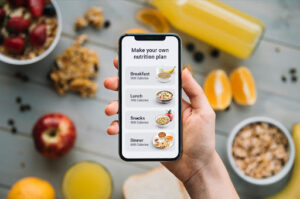What we eat directly impacts how we feel, perform, and live. Good nutrition isn’t just about weight management—it’s the foundation of a healthy lifestyle and the key to achieving your fitness goals, supporting mental clarity, and preventing chronic diseases.
Whether you’re a fitness beginner, a health enthusiast, or someone just curious about improving your diet, this guide will help you understand the fundamentals of nutrition and diet. By the end, you’ll have actionable tips to make smarter choices for your health.
Understanding the Basics of Nutrition and Diet
What are Macronutrients and Micronutrients?
A well-rounded diet begins with understanding the two primary types of nutrients:
- Macronutrients
These are the nutrients your body needs in large amounts. They include:
- Carbohydrates – Your body’s main source of energy. Found in fruits, grains, and vegetables.
- Proteins – Essential for muscle repair and growth. Common sources include meat, fish, eggs, and legumes.
- Fats – Important for brain health and energy. Ex. nuts, seeds, avocados, and healthy oils.
- Micronutrients
Although required in smaller amounts, these are just as vital:
- Vitamins – Support immune function, energy production, and cell repair.
- Minerals – Help with bone health, nerve function, and fluid balance. Examples include calcium, iron, and potassium.
The Difference Between a Balanced Diet and Fad Diets
A balanced diet gives your body a mix of macronutrients and micronutrients every day. Simple as that. Unfortunately, fad diets often promise quick fixes by restricting certain food groups or macronutrients entirely.
For example:
- Ketogenic Diets focus on high-fat, low-carb intake but aren’t for everyone’s long-term health needs.
- Juice Cleanses can strip your diet of essential proteins and fats, leaving you without energy.
Instead, aim for consistency and variety, avoiding extreme restrictions that might do more harm than good.
Building a Sustainable and Healthy Diet
Incorporating Variety for Optimal Nutrition
Eating the rainbow isn’t just for visuals—it’s essential for balanced nutrition. Here’s how:
- Vegetables & Fruits – A broad range of colors provides a mix of vitamins and antioxidants.
- Whole Grains – Brown rice, quinoa, and whole wheat bread offer fiber and help stabilize energy levels.
- Lean Proteins & Healthy Fats – Incorporate fish, nuts, seeds, and legumes to keep meals nutrient-rich and diverse.
The Role of Portion Control
Even the healthiest diets can falter with oversized portions. Control portions by:
- Using smaller plates and bowls.
- Filling half your plate with vegetables.
- Understanding serving sizes for nuts, oils, and grains (e.g., one serving of almonds is roughly 23 almonds).
Tips for Meal Planning and Eating Healthy on a Budget
Think you can’t afford to eat healthily? Think again! Here are practical tips to stay on track:
- Plan Weekly Meals – Choose recipes using overlapping ingredients like spinach or canned beans to reduce waste.
- Shop Smart – Opt for seasonal produce and buy staples like rice, oats, and lentils in bulk.
- Cook in Batches – Prepare meals for the week to save time, money, and effort.
Nutrition and Fitness: Fueling Your Workouts
Pre- and Post-Workout Nutrition
What you eat fuels how you perform during workouts. Here’s a quick guide:
- Before Workouts
Focus on slow-releasing carbs 2–3 hours before, like oatmeal or whole-grain toast with peanut butter, for a steady energy release.
- After Workouts
Opt for a protein-rich meal within 1–2 hours to repair muscles. Add healthy carbs like sweet potatoes or brown rice to replenish glycogen stores.
The Importance of Hydration
Staying hydrated is just as critical as what you eat. Water regulates body temperature, aids recovery, and boosts energy. Tips:
- Bring a refillable water bottle to remind yourself to drink throughout the day.
- Add electrolytes when doing vigorous workouts longer than an hour.
The Impact of Diet on Overall Health
The Link Between Nutrition and Chronic Diseases
Did you know that a poor diet is one of the leading causes of chronic illnesses like heart disease and diabetes? Here’s how nutrition fights them:
- Lower Cholesterol – Reduce trans fats and eat heart-friendly oats and salmon.
- Control Blood Sugar – Opt for complex carbs like quinoa or legumes rather than refined sugar.
Making Sustainable Changes for Long-Term Health
Rome wasn’t built in a day—and neither are lasting healthy habits. Start small:
- Replace sugary drinks with water or green tea.
- Swap white bread and pasta for whole-grain versions.
- Cook at home more often to control what goes into your meals.
Remember, progress over perfection. Consistent, small changes yield big results.
Start Living Your Healthiest Life Today
Healthy eating doesn’t have to be restrictive or stressful. By understanding the basics of nutrition, planning meals wisely, and making smarter food choices, you’re investing in a longer, happier life.
Have questions about nutrition? Share your story or ask us below—every comment builds our community of health-conscious individuals striving to improve together. Stay motivated, and remember, eating smart is the first step to living well!




